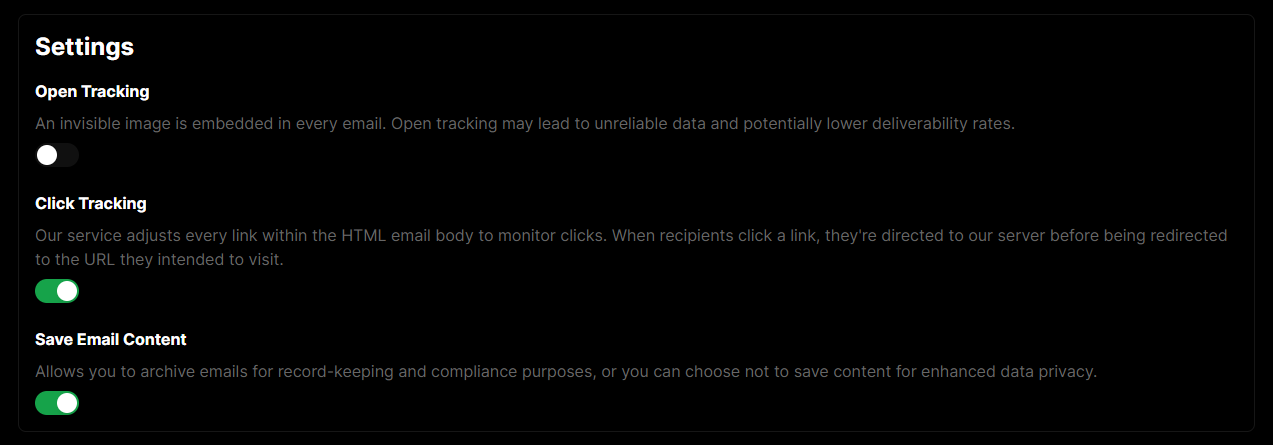Skip to main contentConfiguring domain
DNS records
After adding your custom domain to Sendrealm, you’ll need to configure the DNS records with your DNS provider. Once this step is completed, you may need to wait up to 24 hours for the DNS changes to propagate.

SPF records
SPF (Sender Policy Framework) is an email authentication method designed to prevent spammers from sending messages on behalf of your domain. It allows the domain owner to specify which mail servers are permitted to send email on behalf of their domain.
DKIM records
DKIM (DomainKeys Identified Mail) is an email authentication method designed to detect email spoofing. It allows the receiver to check that an email claiming to come from a specific domain was indeed authorized by the owner of that domain. DKIM uses cryptographic authentication to verify the email’s integrity and authenticity.
DMARC
DMARC, or Domain-based Message Authentication, Reporting, and Conformance, is an email authentication protocol that helps organizations protect their email domains from being used for phishing and spoofing attacks. It works by allowing domain owners to set policies that specify how receiving email servers should handle emails that claim to be from their domain.
Domain settings
You can use domain settings to adjust and customize your open tracking, click tracking, and mail content privacy settings. Tailor these aspects precisely to suit your preferences and requirements, ensuring a seamless and secure email experience tailored to your needs.

Open tracking
Open tracking involves embedding an invisible image in every email sent. When a recipient opens the email, the image is loaded, signaling that the email has been opened. However, this method can lead to unreliable data, as some email clients block images by default, preventing the tracking pixel from loading. Additionally, frequent use of open tracking can negatively impact deliverability rates, as some email providers may flag emails with tracking pixels as spam.
Click tracking
Click tracking modifies every link within the HTML body of an email to monitor clicks. When recipients click on a link, they are first directed to our server, which logs the click, before being redirected to the intended URL. This allows us to track engagement with the email content.
Mail-content privacy
Mail-content privacy gives you the option to archive emails for record-keeping and compliance purposes. By default, this option is enabled, ensuring that all sent emails are stored for future reference. However, if data privacy is a concern, you can choose not to save the content of emails, enhancing data privacy for both the sender and the recipients. Disabling content saving ensures that no email content is stored on our servers, providing an additional layer of security and privacy. 


